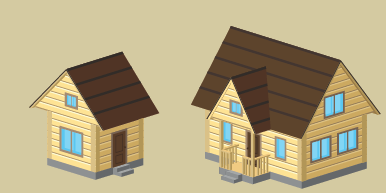The Incredible Shrinking Houses
The average new British home is now just 925 square feet – barely half the size they were in the 1920s. Millions of Britons are living in ‘rabbit hutch’ family homes that have halved in size since the 1920s. The average semi-detached house now has one less bedroom and is much more cramped, dark and artificially lit than those built in the early 20th century.
In 1920, average homes usually measured 1,647 square feet and had four bedrooms, but today’s equivalent has three bedrooms and is 925 square feet, according to the Institution of British Architects. London and other big cities are of course particularly affected by shrinking home sizes, due to the limited space and almost unlimited property values. Buyers may well prefer to buy even a tiny place, if the other options are paying rents to live in someone else’s house or moving out of London completely.
But this isn’t just an urban problem. One study carried out by the University of Cambridge recently found that 55% of UK homes fall short of the accepted internal space standard. According to a recent research, the average one-bedroom flat is now the same size as a London Underground tube carriage. Average terraced homes have also shrunk from three bedrooms with 1,020 square feet, to two bedrooms and 645 square feet. Overall, Britain now has the smallest homes on average in Europe.
Some academics argue that space is not simply a ‘nice to have’ optional extra, it is fundamental to our well-being. “Lack of space affects the quality of life,” concluded the Cambridge report. “As well as simply allowing people to have a comfortable standard of living, additional space can also reduce stress by allowing members of the same household to engage in different activities at the same time, and ease feelings of claustrophobia experienced in small spaces.”

